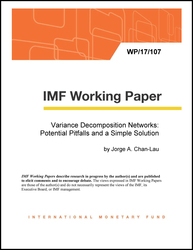
Variance Decomposition Networks
Potential Pitfalls and a Simple Solution
Diebold and Yilmaz (2015) recently introduced variance decomposition networks as tools for quantifying and ranking the systemic risk of individual firms. The nature of these networks and their implied rankings depend on the choice decomposition method. The standard choice is the order invariant generalized forecast error variance decomposition of Pesaran and Shin (1998). The shares of the forecast error variation, however, do not add to unity, making difficult to compare risk ratings and risks contributions at two different points in time. As a solution, this paper suggests using the Lanne-Nyberg (2016) decomposition, which shares the order invariance property. To illustrate the differences between both decomposition methods, I analyzed the global financial system during 2001 – 2016. The analysis shows that different decomposition methods yield substantially different systemic risk and vulnerability rankings. This suggests caution is warranted when using rankings and risk contributions for guiding financial regulation and economic policy.
Publication date: May 2017
ISBN: 9781475598407
$18.00
Add to Cart by clicking price of the language and format you'd like to purchase
Available Languages and Formats
| English |
Prices in red indicate formats that are not yet available but are forthcoming.
Topics covered in this book
This title contains information about the following subjects.
Click on a subject if you would like to see other titles with the same subjects.
networks , regularization techniques , global financial system , variance decomposition , VAR , Time-Series Models , Other
Summary
Copyright © 2010 - 2024
Powered by:
AIDC



